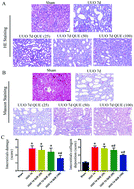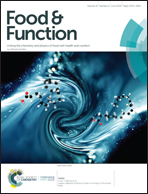Quercetin inhibits kidney fibrosis and the epithelial to mesenchymal transition of the renal tubular system involving suppression of the Sonic Hedgehog signaling pathway
Abstract
Quercetin is the most ubiquitous flavonoid in fruits, herbs, vegetables and products made from them. It shows the potential to inhibit the progression of kidney fibrosis and the epithelial to mesenchymal transition (EMT) of the renal tubular system, but the molecular mechanism behind this is still not known. In our study, we explored the effect of quercetin treatment on extracellular matrix (ECM) deposition and stimulation of the EMT in vitro and in vivo and tried to deduce the mechanisms regulating these effects. In rats having unilateral ureter obstruction (UUO), quercetin treatment significantly prevented renal function decline. Quercetin reduced the TGF-β1 expression and inhibited the epithelial cell to mesenchymal cell phenotypic switch, as well as ECM deposition in rats with UUO. In cultured epithelial cells of the renal tubular region (NRK-52E), quercetin markedly ameliorated the EMT and ECM synthesis induced by TGF-β1. Activation of the Hedgehog pathway was closely related to EMT induction. Quercetin effectively suppressed the hyperactive Hedgehog pathway in NRK-52E cells treated with TGF-β1 and in kidney obstructed rats, which reduced the EMT, ECM deposition and cellular proliferation. Moreover, we examined certain transcriptional factors (slug, snail, ZEB-1 and twist) that govern the E-cadherin expression at the level of transcription. The results unveiled that the four transcriptional factors were highly repressed in NRK-52E cells treated with TGF-β1 and also in obstructed kidneys by quercetin-mediated inhibition. Therefore, these outcomes indicate that quercetin could alleviate fibrosis and the EMT in vitro and in vivo by inhibiting the activation of Hedgehog signaling and could act as a therapeutic agent for patients having several kinds of renal fibrotic diseases.



 Please wait while we load your content...
Please wait while we load your content...